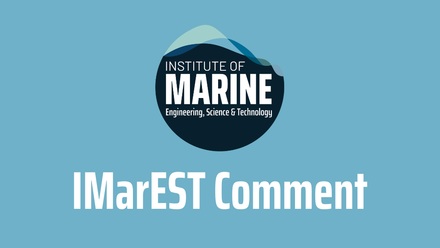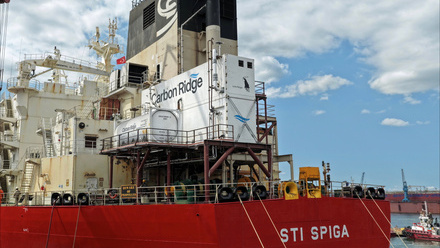The future of emissions in shipping: charting a sustainable course
It’s a striking fact that if left unchecked, shipping could see its global share of greenhouse gas (GHG) emissions rise from around 3% currently, to 10% in 2050. But various initiatives are underway to ensure that the industry decarbonises. To help our members navigate this complex area Peter Sheppard, our head of technical and policy, has produced this guide to industry emissions.
At the upcoming COP29 in Baku, Azerbaijan, maritime emissions are likely to be on the agenda, as governments, industry leaders, and environmental advocates push for more robust action. For those working in the sector, it is crucial to understand the future of Greenhouse Gas (GHG) emissions, grasp the industry's environmental impact, and recognise the economic, regulatory, and operational changes that lie ahead.
Maritime emissions and their climate impacts
The shipping industry accounts for approximately 2.9% of GHG emissions, primarily through the combustion of fossil fuels like Heavy Fuel Oil (HFO), marine diesel, and liquefied natural gas (LNG).
This may seem modest compared to other sectors like energy or manufacturing, but maritime emissions are growing in tandem with global trade. If left unchecked, shipping could account for up to 10% of the world’s total emissions by 2050, exacerbating climate change impacts such as rising sea levels, extreme weather events, and ocean acidification.
Ships also have a history of emitting pollutants such as sulphur oxides (SOx), nitrogen oxides (NOx), and particulate matter (PM), which contribute to air quality issues, particularly in coastal and port areas. These emissions not only harm ecosystems but also pose serious health risks to humans.
The regulatory landscape: pressure to decarbonise
In response to the sector’s significant emissions footprint, regulatory bodies and international organisations have implemented measures to accelerate decarbonisation.
The International Maritime Organization (IMO) adopted an initial strategy aimed at reducing GHG emissions from shipping by at least 50% by 2050 compared to 2008 levels. More recently, the IMO's Marine Environment Protection Committee (MEPC) has set interim targets for the 2030s, including a 40% reduction in carbon intensity by 2030 and full decarbonisation by the latter half of the century.
The European Union is also ramping up pressure with its ‘Fit for 55’ package, which aims to cut emissions by 55% by 2030 and includes shipping in its Emissions Trading System (ETS). This requires ship owners operating in EU waters to purchase carbon allowances for their emissions, a move that is expected to have wide-reaching effects on operational costs and investment decisions.
Other regional initiatives, such as the Clean Cargo initiative and California's stringent emissions regulations, further underscore the growing need for shipping companies to adapt to an evolving regulatory environment.
Technological innovations driving decarbonisation
Decarbonising the maritime sector will require transformative changes in both technology and operations, which we are starting to see coming online. Some of the key innovations leading the charge include:
Alternative Fuels
One of the most promising solutions to reduce emissions is the adoption of fuels such as green hydrogen, ammonia, and biofuels. These have the potential to drastically cut, or even eliminate, GHG emissions. However, challenges remain, such as the scalability of fuel production, infrastructure requirements, and safety concerns.
Energy Efficiency Technologies
Improving energy efficiency on ships is another critical pathway to emission reduction. Technologies such as air lubrication systems, rotor sails, and optimised hull designs can significantly reduce fuel consumption. Combined with digital solutions like voyage optimisation software, these measures are expected to play an increasingly important role in meeting emissions reduction targets.
Electrification and Hybrid Solutions
Electrifying short sea shipping routes and using hybrid propulsion systems are also gaining traction. These technologies are particularly effective for ferries and other vessels operating on fixed routes, where shore-side charging infrastructure can be installed. The increased use of batteries and fuel cells could offer near-zero-emission solutions for some segments of the shipping industry.
Carbon Capture and Storage (CCS)
Carbon capture technology is still in its infancy for the maritime sector, but it holds potential as a transitional solution. By capturing carbon emissions before they are released into the atmosphere, shipping companies could continue to use fossil fuels while reducing their climate impact. However, the costs and logistics of storing and transporting captured carbon remain significant barriers.
The Economic and Industry-Wide Implications
Transitioning to low- and zero-emission shipping will undoubtedly come with challenges, particularly around cost and infrastructure. For ship owners, the upfront costs of retrofitting existing vessels or investing in new, cleaner ships can be daunting. However, as regulatory pressures mount and carbon pricing schemes like the EU's ETS come into play, the cost of inaction could outweigh the cost of investing in greener technologies.
The decarbonisation of shipping will also have ripple effects throughout the supply chain. Ports will need to upgrade their infrastructure to accommodate new fuelling technologies, while logistics companies will have to adjust to new compliance requirements and fluctuating fuel prices. In the long term, these changes could reshape global trade patterns, as more sustainable shipping routes become economically viable.
The role of IMarEST in the transition
The IMarEST, as the leading professional body for marine engineering, science, and technology, is in a unique position to support its members through this transition. The Institute’s Special Interest Groups (SIGs), such as those focused on offshore renewable energy or marine energy and environment, are already engaging with the key issues surrounding decarbonisation. By fostering dialogue between engineers, scientists, policymakers, and industry stakeholders, IMarEST is helping to drive the innovation and knowledge-sharing needed to meet the IMO's ambitious targets.
Moreover, as the shipping industry navigates this complex landscape, professional development and continuous learning will be essential. The IMarEST’s publications, workshops, and conferences provide a platform for members to stay informed about the latest regulatory developments, technological advances, and operational strategies in emissions reduction.
Charting a sustainable course
The future of shipping will undoubtedly be shaped by the global drive to reduce emissions and combat climate change. As the industry evolves, the shipping community must embrace collaboration, innovation, and bold action to ensure that the maritime sector contributes meaningfully to a more sustainable future.
By staying engaged and informed, The IMarEST members can be at the forefront of this transformation, helping to chart a course toward a cleaner, greener future for global shipping.
Join our Ship Energy and Environment Special Interest Group to get more involved in this area.






